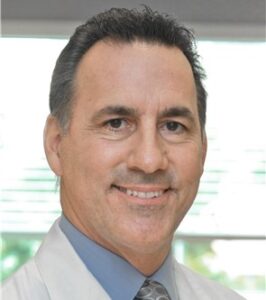Shoulder Surgeon Dr. Alejandro Badia Discusses Surgical Advances; Offers Tips for Healthy Shoulders
MIAMI (PRWEB) August 24, 2021
Minimally invasive surgery often serves as both key and “keyhole” for diagnosing and treating several of the most common shoulder disorders, namely rotator cuff injuries, labrum (SLAP) tears, and unstable shoulder joints, says hand and upper limb orthopedic specialist Alejandro Badia MD. He refers to arthroscopic surgery as “keyhole” surgery because it is performed through tiny incisions cut just large enough to accommodate insertion of a mini-camera and micro instruments.
“Orthopedists have been performing arthroscopy since the 1970s, but ongoing advances in the technique have substantially enhanced its value in pinpointing, evaluating, and resolving disorders of complicated joints like the shoulder,” emphasizes Dr. Badia. “In fact, arthroscopy is among the most frequent kinds of orthopedic surgery performed because it limits post-operative pain, reduces a patient’s healing time, and minimizes risk of infection.”
For an experienced orthopedic surgeon, “arthroscopic surgery is often the treatment of choice to repair a rotator cuff and restore shoulder mobility and strength in athletes who play high-demand sports like baseball or tennis. It also is a preferred approach for workers required to perform extensive overhead activities and for patients whose shoulder problems are chronic and have not responded to more conservative therapies,” states Dr. Badia. He is founder and chief medical officer of the Miami-based Badia Hand to Shoulder Center and OrthoNOW®.
The rotator cuff consists of a stabilizing system of four major tendons and muscles that keep the head of the upper arm bone in the shoulder socket, allowing the arm to be raised and rotated. Partial — or complete — tears may occur simply from normal wear and use over time or from repetitive activities that stress the shoulder joint. Symptoms of rotator cuff problems include shoulder and arm weakness, pain when raising or rotating an arm, and discomfort while trying to sleep.
Statistics show that as many as four million Americans – and 50 percent or more over age 60 – have some level of rotator cuff disease.
A SLAP tear involves damage to the superior, or upper, part of the labrum where the bicep muscle tendon attaches. The labrum is the cartilage rimming the shoulder joint’s shallow glenoid, the shoulder-blade socket into which the upper arm’s humerus bone fits. Repair of a SLAP injury can sometimes require reattachment of the bicep tendon, Dr. Badia says.
A study appearing in a 2016 edition of The Orthopaedic Journal of Sports Medicine underscores the frequency of SLAP-related disorders among the general population. Authors of the report find a high prevalence of labral tears even among asymptomatic adults who are between the ages of 45 and 60 and never have experienced injury or undergone surgery to either shoulder.
“Many patients with labral tears also have other shoulder injuries as well, including rotator cuff damage,” Dr. Badia adds.
Among arthroscopic surgery’s other wide-ranging applications is its usefulness in the treatment of unstable shoulder joints and recurrent shoulder dislocations, which is most common in young athletes, says Dr. Badia.
“SLAP tears, as well as ligaments and joint capsule lining that have become stretched, torn or detached from bone, can lead to destabilization – or looseness — of the shoulder joint. The labrum and ligaments are what help keep the ball of the humerus bone from partially, or completely, leaving the glenoid socket,” Dr. Badia says. “Even if the humerus snaps back into position again without medical assistance, the patient will experience pain and restricted motion of the shoulder. Arthroscopic procedures often prove an effective method for treating the ligaments and cartilage contributing to the problem.”
A 2016 study by the American Orthopaedic Society for Sports Medicine offers evidence that arthroscopic surgery performed on first-time shoulder dislocations is more effective in reducing risks of shoulder-reinjury and need for follow-up surgery than using a more conservative, non-operative treatment regimen.
Of course, the overall best approach to maintaining a healthy shoulder is prevention. That is why Dr. Badia offers these tips for avoiding a trip to the orthopedist:
- Warm up the limbs, including shoulder, before engaging in any sports activities, especially those requiring repetitive overhead movements, or before doing heavy lifting.
- When exercising, do not overtax the joints or attempt lifting weights beyond capabilities. Know your limits.
- Follow the correct method for lifting by bending the knees, grasping the item, and then using the legs and knees to propel upwards. Simply bending over at the waist and trying to pick up a heavy load puts too much stress on arms and shoulders and can injure upper joints.
- Avoid straining the shoulder when reaching for something, especially if that “something” is high above you.
“And, if shoulder joint pain develops and persists for more than a few days, seek immediate treatment from an orthopedic specialist. Minor problems have a way of becoming major ones when ignored,” Dr. Badia says.
Alejandro Badia, MD, FACS, internationally renowned hand and upper-limb surgeon and founder of Badia Hand to Shoulder Center and OrthoNOW®, a walk-in orthopedic care clinic. He is a member of the American Society for Surgery of the Hand, American Association for Hand Surgery and the American Academy of Orthopedic Surgeons and an honorary member of many international professional hand societies. Dr. Badia specializes in treating all problems related to the hand and upper extremities, including trauma, sports injury, joint reconstruction, nerve injuries and arthroscopic surgeries. http://www.drbadia.com http://www.orthonowcare.com

